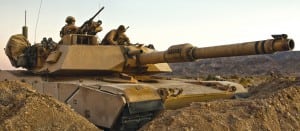
The Army in its fiscal 2017 budget request accepted deep cuts to procurement and modernization in support of increased funding for near-term investments in readiness of personnel and equipment to fight today’s battles.A $125.1 billion base budget, the Army’s request is $1.4 billion less than its outlay for fiscal 2016. The service’s total request for next year is $148 billion including overseas contingency operations funding, which edged up from $21 billion in the current year to $23 billion in the…

 By
By 











